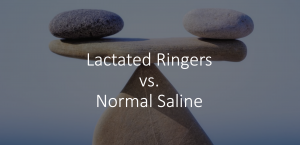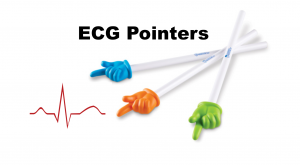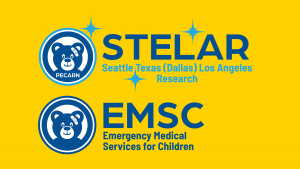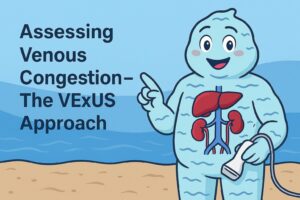Originally published at Pediatric EM Morsels on May 18, 2018. Reposted with permission.
Follow Dr. Sean M. Fox on twitter @PedEMMorsels
No one likes to feel dizzy and, certainly, no one likes feeling as if the the room is spinning (unless you are competing in a game of Dizzy-Bat). When an adult has vertigo, I get queasy too. The severe causes can look very similar to the benign ones in adults, but what about with kids? What issues do I need to contemplate in children presenting with vertigo? Let us take a minute to digest a Morsel of goodness on Vertigo in Children:
Vertigo: Basics
- Dizziness is a common complaint. [Davitt, 2017]
- Vertigo is an illusion of motion.
- May be described as a “spinning” or “whirling.”
- “Dizzy” is often the initial complaint, but it is not descriptive enough to be overtly helpful.
- Unfortunately, children may lack the vocabulary to better describe their feelings.
- Children may also lack the experience to understand their sensations.
- Children vs Adults
- Children will have a more difficult time describing symptoms (although, not all adults are proficient in verbal communication of their symptoms either).
- Children may be more difficult to appreciate their nystagmus.
- Children will be more likely have vertigo related to migraines.
- Children will be less likely to have Meniere’s disease.
- Children will be less likely to have vascular etiology.
Vertigo: Causes
Vertigo in children “does not commonly represent a life-threatening or serious illness.” [Davitt, 2017]
Common Causes in children who have normal tympanic membranes. [Davitt, 2017; Raucci, 2016; Erbek, 2006]
- Migraine-Associated Vertigo [Davitt, 2017; Raucci, 2016; Erbek, 2006]
- Most common condition associated with vertigo (other than Otitis Media)
- Vertigo may present before, during, or without headache.
- Neuro exam should be normal.
- More common in children than adults.
- Benign Paroxysmal Vertigo of Childhood (BPVC)
- Recurrent, brief attacks of vertigo.
- Attacks occur without warning and resolve spontaneously.
- Typically seen in children < 5 years of age. [Raucci, 2016]
- Can be associated with pallor, perspiration, fearfulness, nausea, vomiting, phonophotophobia, and syncope. [Batu, 2015; Erbek, 2006]
- Vertigo does not have relation to head position (different from BPPV).
- Vertigo is not associated with loss of consciousness (different from seizure)
- Has a favorable prognosis and resolves after 6-12 months.
- May be a part of a migraine complex, like cyclic vomiting and abdominal migraine.
- Seizure
- Loss of consciousness associated with vertigo warrants consideration of seizure as cause.
- Staring episodes are also seen. [Batu, 2015]
- Labyrinthitis / vestibular neuronitis
- Follows an upper respiratory tract infection frequently
- Syncope / Orthostatic hypotension / POTS
- Psychogenic
- More prevalent in older children (> 10 years of age)
- It is always reasonable to screen for underlying psychiatric disorders.
- Vertigo associated with anxiety, depression, and behavior disorders are seen. [Erbek, 2006]
- Benign Paroxysmal Peripheral Vertigo (BPPV) [Brodsky, 2017]
- Consists of short-duration vertigo attacks related to head position.
- Less common in children than adults, but does occur.
- More likely to be seen in teenagers.
- Ocular Causes
- Amblyopia
- Astigmatism
- Oculomotor abnormalities
- Many encounters will ultimately be described as “Idiopathic“
Uncommon, But Concerning Causes
Life-threatening disorders presenting with vertigo do occur, but “appear at an extremely low rate.” [Davitt, 2017]
- Trauma
- Skull fractures
- Cardiac Causes
- Arrhythmias (ex, Prolonged QTc)
- Hypertension
- CNS Causes
- Tumors
- Demyelinating disease
- Fortunately, patients “in whom severe neurological pathologies were diagnosed presented with associated signs or symptoms” and vertigo was not an isolated clinical feature. [Raucci, 2016]
Vertigo: Evaluation in the ED
Since the overwhelming majority of cases of vertigo in children will be due to a benign etiology, it is our job to mindfully screen for the rare, life-threatening conditions while being reasonable guardians of our resources.
- A thorough Neurologic and HEENT exam is imperative. [Raucci, 2016; Erbek, 2006]
- Otitis is a very common cause of vertigo (~50%)… don’t overlook the simple.
- Episodes of unsteadiness may be the child exhibiting symptoms of vertigo. [Batu, 2015]
- Check the Blood Pressure. [Raucci, 2016; Batu, 2015]
- Seems simple… but it is also easy to overlook.
- While rare, hypertensive crisis may present with vertigo… so check the BP.
- Check the ECG. [Batu, 2015]
- While the likelihood of a cardiac cause is low, don’t underestimate the power of a simple piece of paper with squiggly lines on it.
- Look for arrhythmia provoking conditions (ex, Prolonged QTc, Brugada)
- Imaging?
- It is unlikely that a head CT will be of much value unless your neurologic exam is concerning for hemorrhage or overt mass.
- MRI will be more useful at imaging the posterior fossa and demyelinating disease… but, with the majority of cases being due to benign and self-limited conditions, emergent imaging is rarely beneficial. [Raucci, 2016; Batu, 2015]
- Outpatient Referral
- Recommend ophthalmological evaluation as outpatient. [Batu, 2015]
- Refractory errors may be the cause of vertigo…
- They can also exacerbate vertigo even if they are not the cause.
- Referral to multidisciplinary team may be beneficial. [Erbek, 2006]
- Outpatient EEG and MRI may be warranted for evaluation of possible seizures.
- Other benign conditions, like migraines and BPVC, have medical therapies available.
- Recommend ophthalmological evaluation as outpatient. [Batu, 2015]
Moral of the Morsel
- The Odds are in Your Favor! Most vertigo in children is related to benign causes (ex, migraines).
- Don’t overlook the obvious! Check the TMs. Look for trauma.
- Do simple screening! Check the ECG and BP!
- Look for signs of underlying Neurological or Cardiac causes.








